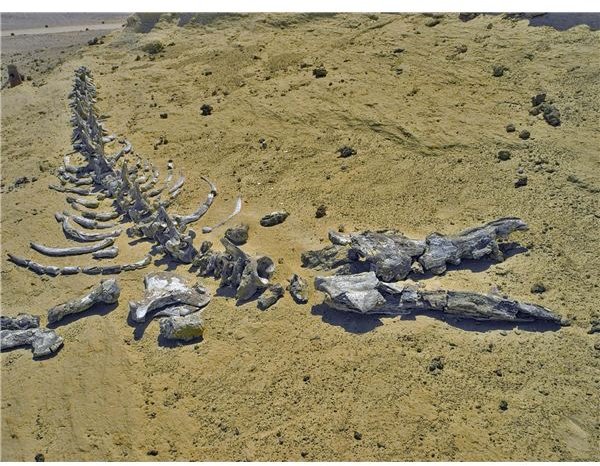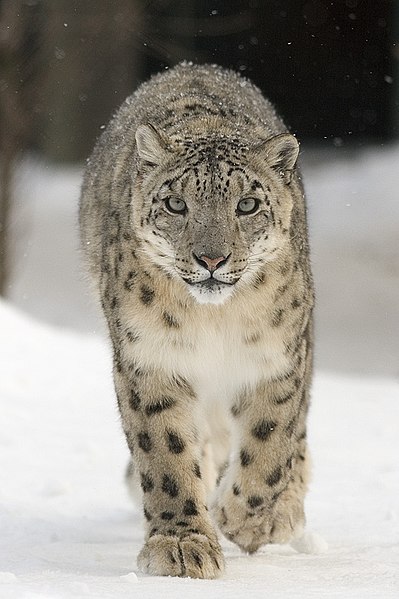Bactrian Camel
Bactrian Camel, which can be found in China and Mongolia. Largely because of human impact, only fewer than 1,000 of them are still around (the other 200 million are domestic). Human-related threats to the Bactrian camel are hunting, hybridization, and increase in livestock caused by increasing human population.
Snow Leopard
Used to be in great number, but the number has dropped dramatically with the increase in human population in the area - around 1,700 remaining in the wild. Since Snow Leopards are carnivore, along with their ability to attack, they become a great threat to livestock. Therefore, they become the target of the hunters. And of course, they are being hunt for their fur.
Gobi Bear

One of the most seriously endangered species, only 20-30 (perhaps even less) survive. They especially suffer from global warming which takes away their water supply. What's more, there just simply aren't enough food for them. They are the
only bears that are adapted to desert climate. But they are being pushed to the edge of extinction.
By:Nicole
Resources:
http://www.zsl.org/conservation/regions/asia/mongolia/gobi-desert,1941,AR.html
http://gobidesert.org/content/animals
http://www.eurasianet.org/node/63682
Picture credits:
http://fohn.net/camel-pictures-facts/bactrian-camels.html
http://en.wikipedia.org/wiki/File:Uncia_uncia.jpg
http://www.google.com/imgres?imgurl=http://beringiasouth.org/Websites/beringiasouth/Images/gobibear.jpg&imgrefurl=http://beringiasouth.org/mongolian-gobi-bear&h=162&w=188&sz=8&tbnid=2AFB80XwW_mG-M&tbnh=0&tbnw=0&zoom=1&usg=__EeS8mez5iIgFL3uEO9h_Hj2mK8c=&docid=WdIjuowHTwy4YM&sa=X&ei=wOalUPSnD-GgiQKj9ICQBw&ved=0CKABENUX




 This is called the Wild Onion. It
has a distinct onion odor with slender grass-like leaves. It can reach about 2 feet in
height when flowers appear in late summer. They are used as food and medicine
This is called the Wild Onion. It
has a distinct onion odor with slender grass-like leaves. It can reach about 2 feet in
height when flowers appear in late summer. They are used as food and medicine Sauxal Tree, the most dominant, resilient, and important plant in the Gobi desert. It grows slowly, depends on underground water sources can grow up to 4 meters in height. Mature sauxal is a natural desert stabilizer which prevents wind erosion as well as the expansion of desert sands. It also provides habitat for animals, food for camels, and fuel for nomads.
Sauxal Tree, the most dominant, resilient, and important plant in the Gobi desert. It grows slowly, depends on underground water sources can grow up to 4 meters in height. Mature sauxal is a natural desert stabilizer which prevents wind erosion as well as the expansion of desert sands. It also provides habitat for animals, food for camels, and fuel for nomads.




